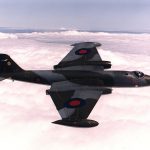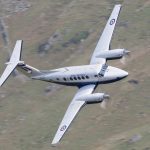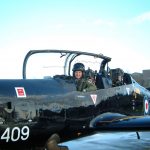Sector One (Parallel) Join
First, set the track pointer to the inbound track of the hold. Then, mentally draw a racetrack (dotted line) which turns left or right at the centre of the instrument so that you can picture the aircraft relationship to the hold. In the illustration below, the aircraft is heading towards the holding fix (bearing pointer is blue) and the inbound track of the hold is 180° (course pointer is green):
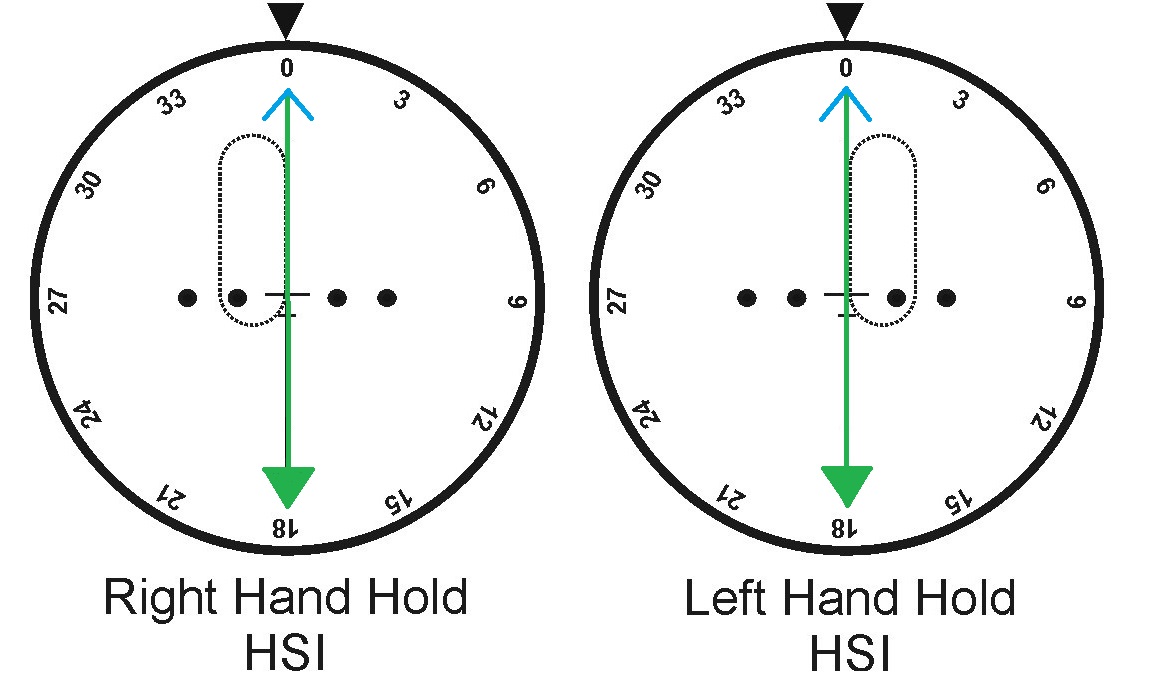
Once you are at the holding fix, fly the aircraft outbound on a heading that will give you a track parallel to, but outbound on, the inbound track (indicated by the track diamond being on the tail of the course pointer), and fly a one minute outbound leg corrected for any head/tailwind component. After that, turn the aircraft in the direction of the holding pattern (to stay on the holding side of the pattern) through approximately 210° to track back to the beacon. If you are flying a standard right-hand hold, the solution should look something like this:
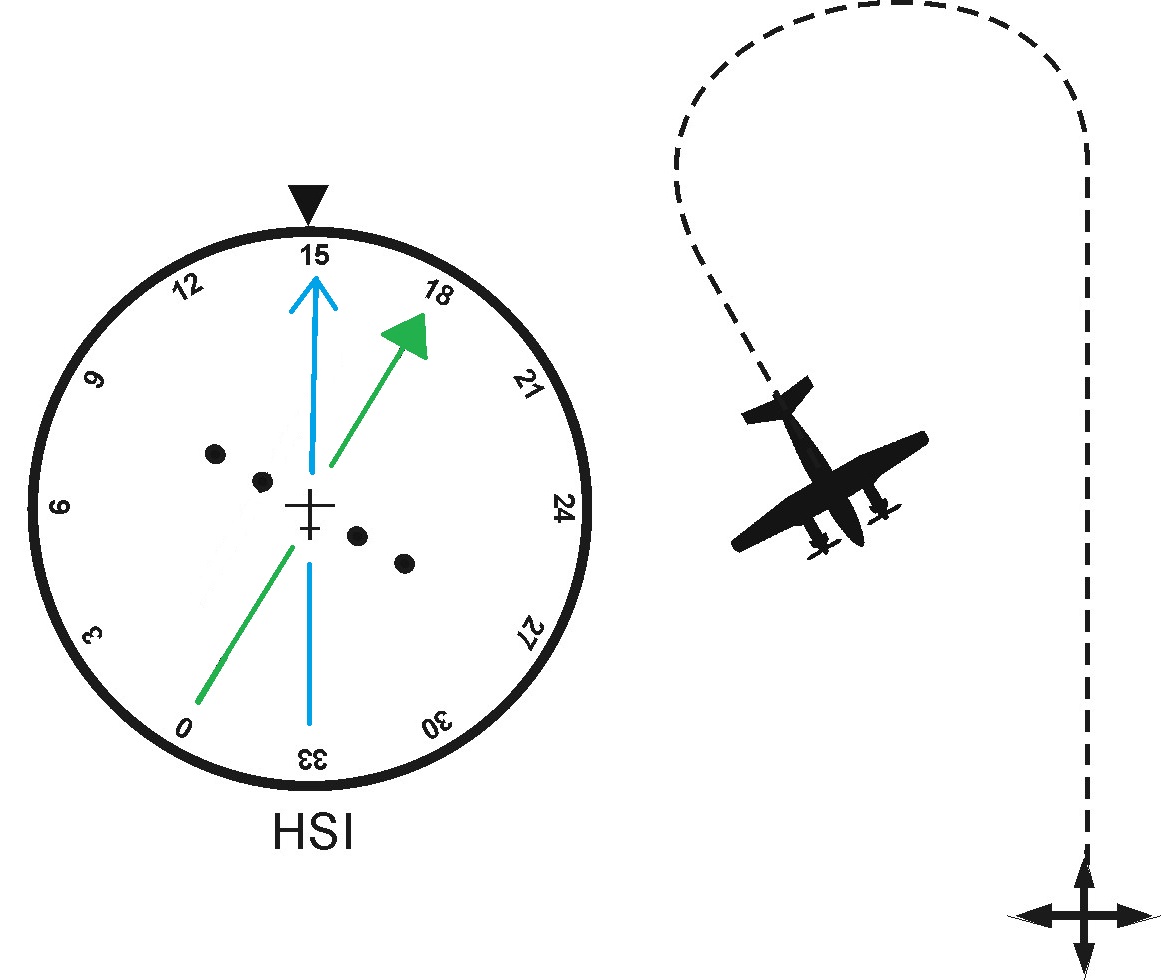
Depending on the wind speed and direction, it can sometimes be a good idea to turn slightly beyond the direct track to the fix (maybe 140° in this case) as this will allow you to establish on the inbound track before you reach the holding fix.
Example – Joining the RW19 Hold at Oxford. In this example the aircraft is tracking directly towards the Oxford ADF into a wind of 240° at 20 kts. The radio aids are all set as described in the page on maintaining the hold.

Sector One Join at Oxford RW19 Hold – Wind 240/20kts.
When cleared to join the hold, it is most important to set the Course Pointer to track the inbound leg of the hold. Then, as you fly towards the beacon, you can visualise the holding pattern imposed onto the HSI as follows:

Imagine the Holding Fix, in this case the Oxford ADF, being at the centre of the HSI and remember to orientate the hold in the correct direction; the Oxford RW19 hold is a standard right-hand hold. Using this technique, you can quickly see that you are joining from Sector One and need to carry out a Parallel join by turning left at the beacon to parallel the inbound leg of the hold in the opposite direction.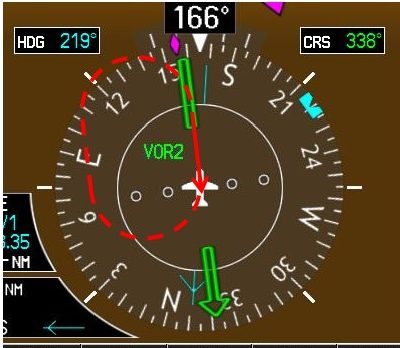
Start the timer as you fly over the beacon and turn to fly parallel (hence the name) to the inbound leg by rolling out of the turn when the magenta Track Diamond is aligned with the tail of the Course Pointer. This may position you slightly on the non-holding side of the pattern, but that is permitted. Remember to report “Callsign, joining the hold maintaining altitude xxxx feet”.
After one minute (corrected for wind) turn onto the holding side of the pattern to return to the holding fix at the beacon:
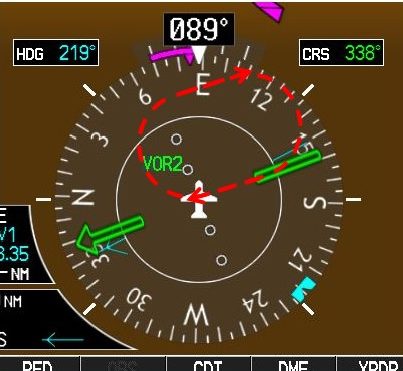
Although the textbook solution is to then track directly to the holding fix, it is sensible to try to establish on the inbound track before reaching the fix; this makes the next hold much easier as you will be starting the outbound turn from the correct heading. In order to do this, you should aim to roll out of the turn with the Track Diamond slightly “outside” of the Bearing Pointer as shown here:

As you approach the beacon from this position, the angle between the Bearing Pointer and Course Pointer will start to reduce. You should respond by adjusting your heading to keep the angle between the Track Diamond and Bearing Pointer the same as the angle between the Bearing Pointer and Course Pointer. If you achieve that, you will fly over the beacon on the correct inbound track with your winds level.

